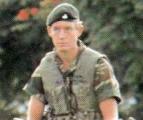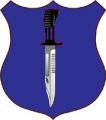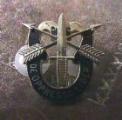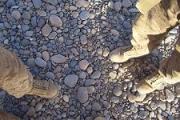Balance was my word and perhaps a bad one. What I meant was that he seemed to want to do it right but did not totally reject the force protection aspect -- merely stating that the MRAP was and is a poor force protection equipage and there were better ways to do it...Again I was perhaps unclear -- subordinate leaders are not my concern; as you say they'll do pretty much what they're told. The senior people are the concern; they have been issued expensive pieces of equipment that provide some protective features and are handy for moving people about. Thus they will use them and direct their use by subordinates. The problem is at the field grade and higher level, not with junior leaders.I'd simply say that if your subordinate leaders are not getting out of their MRAPs, you have a leadership, not a material issue. You can band aid the symptom by removing MRAPs, but the leadership issue will remain. Or, you can solve the root problem, and have MRAPs too.
If the units did not have the MRAPs, they'd have to work a bit harder and smarter. Easier to use the MRAPs...No question. However, by definition half the leaders in the Army are good and the other half less so. Percentiles rule this Army. The current personnel system says that all LTCs are equal -- they are not. Not by a long shot.This is all too common; remove the ability to make a bad decision rather than teaching Soldiers to make a right decision. Good leaders do the latter.
Having said that, philosophically, I agree with you but I'm not really advocating removing the ability to make a bad decision, I'm advocating removing a piece of equipment that encourages bad decisions. In doing so I pointed out that the MRAP was a politically derived solution to a perceived problem; that the Army sensibly resisted buying the monsters until media and political pressure became too great to resist and that now we're stuck with them -- I understand that but believe any suggestion about keeping them is an invitation to future problems.
You are correct that we often use equipment selection to compensate for training shortfalls. We are only marginally trained due to a number of factors, not least that the Congress pushes a lot of ill conceived ideas on all the services and the budget process is so flawed that training is denigrated in order to fund equipment purchase because training dollars benefit only a few Congroid districts; equipment procurements invariably flow funds to numerous districts.
However, in the case of the well intentioned but flawed MRAP we do not have a case where anyone tried to substitute equipment for a training shortfall, we have a situation where a set of equipment was provided by ill informed people with good intentions at huge cost and with much publicity to enhance force protection. No training issue involved. They were provided, they do provide some protection ergo they will be used -- by direction (real or implied) and that's the problem -- the 'employ' outweighs the reasons to use or not use...I doubt anyone's overlooked that, most of the commenters have been there and have seen a fight or two somewhere. Aside from the fact that huge AOs in geographic terms are not at all new. Bns in Viet Nam often had of 1K Km² or more and Bdes often had entire Provinces. That the "modern BCT" is ill designed for its job is a factor (though my spies tell me the mounted Cav Trps are little used. Odd, that...) but you seem to be advocating commuting to work. Why not lift out to an AO, spend a few days or two or three weeks foot mobile and then lift to another after a short break?This discussion seems to be overlooking the fact that the modern BCT is required to project forces over wide areas of real estate. That requires a lot of driving to get where you need to go. It seems that a vehicle with MRAP-like capability would facilitate this.
I know why but we have deliberately chosen not to do that even though it would be far more effective. The MRAP is part of the reason we have made that choice; a a capability exists and it will be -- must be -- used even though it's one that the Army, left alone would likely not have chosen.
You're of course correct that we need to improve training but we also need to be careful what equipment we provide because if a a capability exists, it is going to be used -- even if it should not be. Sergeants, Lieutenants and Captains are NOT the problem with that syndrome...Good idea and I totally agree. The Stryker is a marginal vehicle, the Pandur is better but any good wheeled APC is great and we could use more -- we should not use more MRAPs because MRAPs are not combat vehicles, their x-country cape is pathetic and their height makes them iconic targets on any halfway modern battlefield. Heh, they're iconic targets on the far from modern Afghan battlefield...After all, wasn't this the original idea of mechanized infantry? Protect the Soldiers until they reached the obj, where they can then dismount and fight?
Still, even with wheeled combat vehicles as Tom Odom noted above, for this kind of war, Blackhawks are better. I'd add that combining the birds with lengthy patrolling (as opposed to a day or two) on foot is also better. Way better...




 That's a start.
That's a start.











Bookmarks